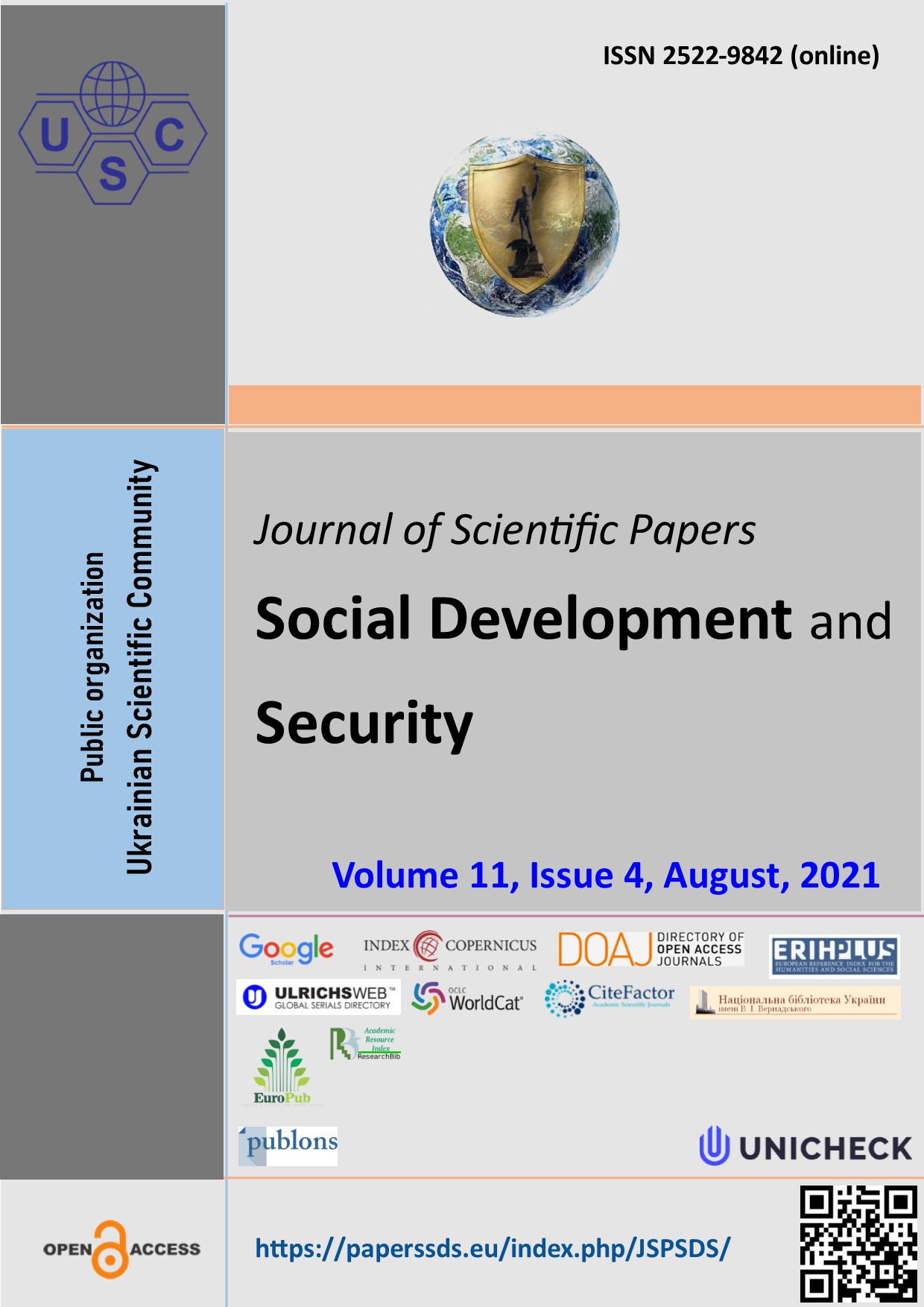Relationship between personal features and copy strategies in joint force participants
Abstract
The purpose of the article is to study the features of the relationship of personality traits with coping strategies in servicemen who are at the stage of decompression after leaving the combat zone. Researchers' views on the relationship between coping strategies of behavior with a number of personal characteristics in the military are analyzed. The results of an experimental study of the relationship between the personality traits of servicemen and coping strategies are presented. The following diagnostic tools were used in the study: Questionnaire of self-control methods (adaptation of WCQ method) by R. Lazarus and S. Folkman in adaptation by T. Kryukova, М. Zamyshlyaeva; personal questionnaire "SACS" (S. Hobfall); five-factor personality questionnaire; methods of multifactor study of R. Kettel's personality; Freiburg personality questionnaire. The following methods were used to process empirical data: descriptive statistics and correlation analysis. The study was conducted with 150 servicemen of the Armed Forces of Ukraine during their decompression operations, after a long stay in the area of the Joint Forces Operation. It is determined that the choice of coping strategies of behavior is determined by personal characteristics. The relationships between indicators of coping strategies and personal traits are established and analyzed: emotional stability and diplomacy, isolation, neuroticism, irritability, reactive aggression, depression, masculinity / femininity, sociability, trust, diplomacy. The use of coping strategies by servicemen during decompression in connection with personal parameters has been proved. Being in difficult conditions undoubtedly affected the psychological characteristics of each soldier. The obtained results contribute to the development of a program for the development of personal determinants of the choice of effective coping strategies of servicemen at the stage of decompression.
Downloads
References
Aleksandrova L. A. (2008). Sviaz mekhanyzmov psykholohycheskykh zashchyt y sovladanyia s aktsentuatsyiamy kharaktera, typom temperamenta, эmotsyonalnoi kompetentnostiu y ahressyvnostiu [The relationship between the mechanisms of psychological defenses and coping with character accentuations, type of temperament, emotional competence and aggressiveness] / Vestnyk Kemerovskoho hosudarstvennoho unyversyteta. Seryia “Psykholohyia” – Bulletin of the Kemerovo State University. Series “Psychology”, № 4. 75-83. [In Russian].
Billings A. G., Moos R. H. Coping, stress and social resources among adults with unipolar depression. J. Pers and Soc. Psychol. 2013. Vol. 46, рр.877–891.
Clark K., and C. Bormann, Cropanzano, R., James K. (1995). Validation evidence for three coping measures. Journal of Personality Assessment. 65, 434–455.
Lasarus R., Folkman S. Stress, appraisal and copying. New York: Springer Publishing Company. 1984. 445 р.
Pro zatverdzhennia Instruktsii z orhanizatsii psykholohichnoi dekompresii viiskovosluzhbovtsiv Zbroinykh Syl Ukrainy: nakaz HSh ZSU vid 27 hrudnia 2018 roku №462.
Rasskazova E. I. (2013). Koping-strategii v strukture deyatel'nosti i samoregulyacii:psihometricheskie harakteristiki i vozmozhnosti primeneniya metodiki cope [Coping strategies in the structure of activity and self-regulation: psychometric characteristics and the possibility of applying the technique]. Psihologiya. Zhurnal VSh`E – Psychology. HSE Journal/ Vol. 10 (1), 82–118. [In Russian].
Tremolada M., Bonichini S., Taverna L. Coping Strategies and Perceived Support in Adolescents and Young Adults: The Predictive Model of Self-Reported Cognitive and Mood. PSYCH Publ. 2016. Vol.7 (14), рр. 858–871.
Abstract views: 312 PDF Downloads: 273
Copyright (c) 2021 Maria Yarmolchyk , Liliia Semenenko , Yuzef Dobrovolskyi , Tetiana Poberezhec

This work is licensed under a Creative Commons Attribution 4.0 International License.
The authors agree with the following conditions:
1. Authors retain copyright and grant the journal right of first publication (Download agreement) with the work simultaneously licensed under a Creative Commons Attribution License that allows others to share the work with an acknowledgment of the work's authorship and initial publication in this journal.
2. Authors have the right to complete individual additional agreements for the non-exclusive spreading of the journal’s published version of the work (for example, to post work in the electronic repository of the institution or to publish it as part of a monograph), with the reference to the first publication of the work in this journal.
3. Journal’s politics allows and encourages the placement on the Internet (for example, in the repositories of institutions, personal websites, SSRN, ResearchGate, MPRA, SSOAR, etc.) manuscript of the work by the authors, before and during the process of viewing it by this journal, because it can lead to a productive research discussion and positively affect the efficiency and dynamics of citing the published work (see The Effect of Open Access).
















